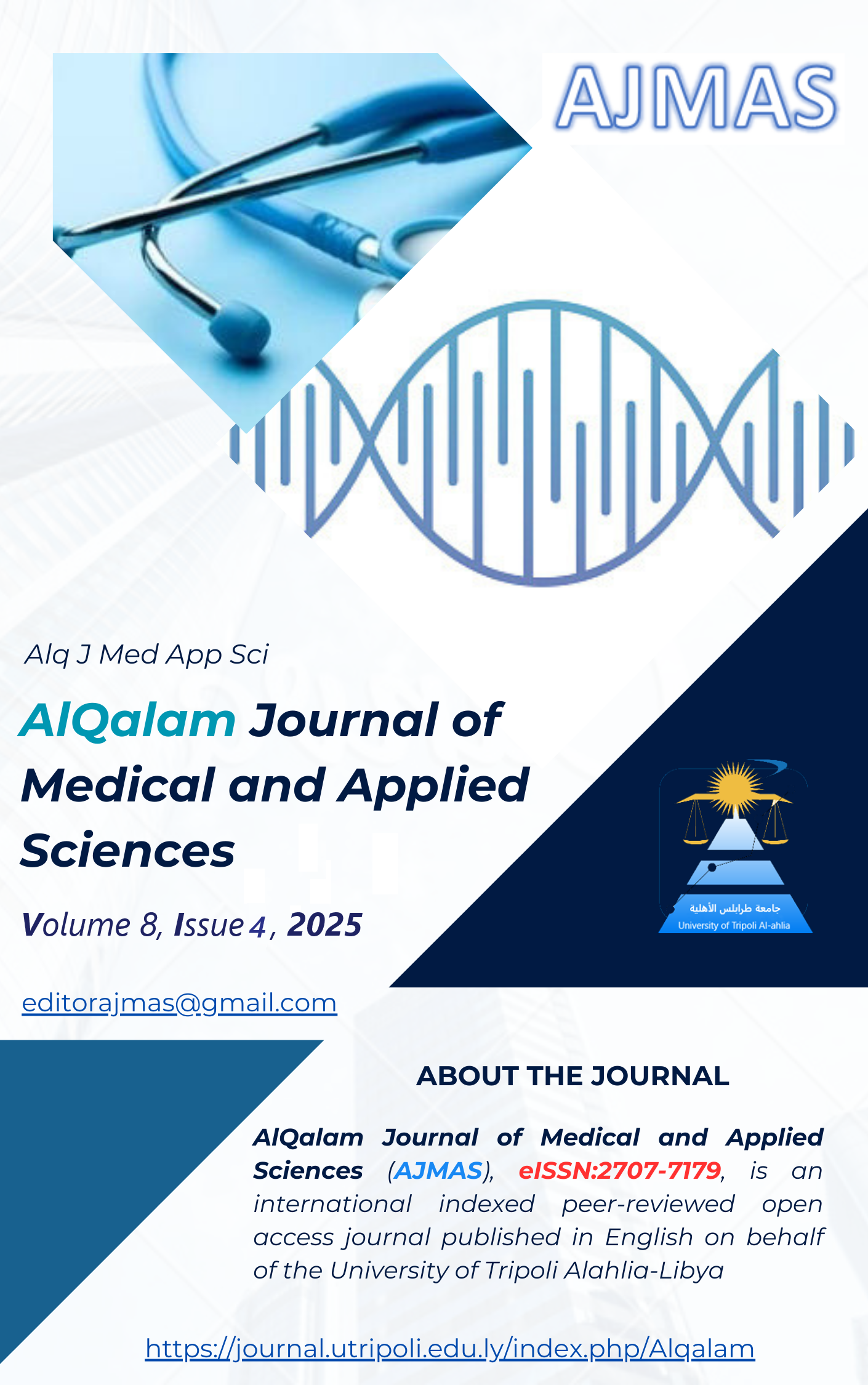Comparative Effectiveness of Physiotherapy in Improving Pain and Shoulder Mobility in Diabetic and Non-Diabetic Patients with Adhesive Capsulitis
DOI:
https://doi.org/10.54361/ajmas.258451Keywords:
Adhesive Capsulitis, Frozen Shoulder, Physiotherapy, Diabetic PatientsAbstract
Adhesive capsulitis (AC) leads to pain and restricted shoulder range of motion (ROM), with diabetes potentially influencing recovery. This study compared the early response to structured physical therapy in diabetic and non-diabetic patients with AC. Thirty patients aged 40–60 years with unilateral AC were randomly assigned to a diabetic group (n = 15) or a non-diabetic group (n = 15). All participants received daily 40-minute sessions for 10 days, including interferential therapy, graded joint mobilization (Maitland technique), and a standardized home exercise program. Pain intensity was assessed using a 10-cm visual analogue scale (VAS), while active shoulder abduction and external rotation were measured with a goniometer on days 1, 3, 5, 7, and 10. Data were analyzed using paired t-tests for within-group comparisons and unpaired t-tests for between-group comparisons, with significance set at p < 0.05. Baseline characteristics—including age, symptom duration, sex distribution, pain scores, and ROM—were comparable between groups (p > 0.05). Both diabetic and non-diabetic groups exhibited significant within-group reductions in pain over 10 days (p < 0.05–0.001). Shoulder abduction and external rotation improved significantly in both groups, with mean abduction gains of 20.33° (diabetic) and 13.16° (non-diabetic) and mean external rotation gains of 11.33° (diabetic) and 17.00° (non-diabetic) by day 10. Between-group comparisons revealed slightly greater ROM improvements in non-diabetic patients at days 7 and 10 (p < 0.05), while pain reduction was similar across groups (p > 0.05). Structured physical therapy yields significant early improvements in pain and shoulder mobility in patients with AC, regardless of diabetic status. Non-diabetic patients may experience slightly faster ROM recovery, suggesting a modest impact of diabetes on functional recovery. These findings support the use of early, standardized physiotherapy interventions for AC, with consideration for potential systemic factors in diabetic patients.
Downloads
Published
How to Cite
Issue
Section
License
Copyright (c) 2025 Ali Shauosh, Munir Krifa

This work is licensed under a Creative Commons Attribution 4.0 International License.















